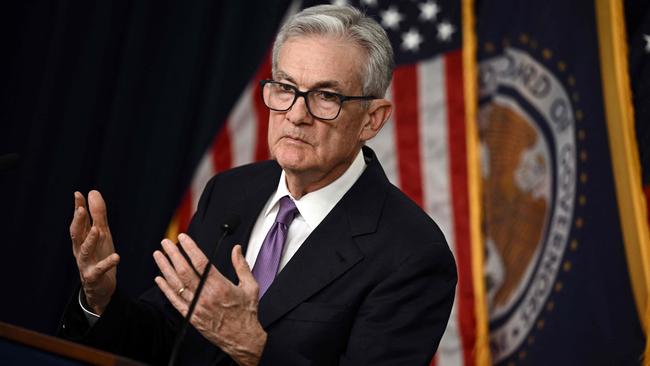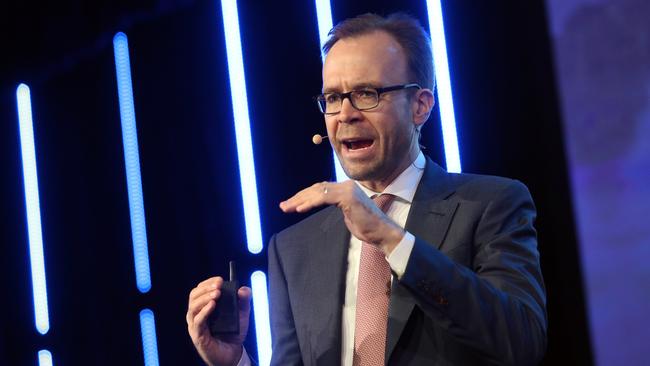US Federal Reserve not dovish enough for markets
The US Federal Reserve minutes show it believes interest rates have peaked but that wasn’t enough for markets which had expected cuts to begin in March.

Fed minutes confirmed US policymakers think interest rates have peaked, but they weren’t dovish enough for markets expecting the US central bank to begin rapid-fire interest rate cuts in March.
After hoovering up stocks and bonds in the final two months of the year, investors looked to be taking some profits while awaiting the next catalysts for earnings and interest rate expectations.
Given that the main driver in the past two months was the Fed’s pivot away from rate rises (backed by lower than expected US inflation data), market bulls will be hoping Friday’s US non-farm payrolls data shows some weakness, without indicating that the economy is hitting the wall.
Attention will then turn to US CPI data next Thursday and the December quarter reporting season that fires up at the end of next week, when some of the biggest US banks report.
JPMorgan says investors have started the year with low levels of cash.
“The implied cash allocation of non-bank investors globally has declined towards the lows of the end of 2021, suggesting that there is currently a very low liquidity cushion to propagate financial assets further, thus posing downside risk to both equities and bonds going forward,” said the US bank’s global market strategist, Nikolaos Panigirtzoglou.
His indicators now point to elevated equity and bond positioning and low commodity positioning except for gold. Investors appeared to have been flocking into gold and bitcoin, he added.
While notably less hawkish than the minutes of the previous Fed meeting, the December Fed minutes were by no means clear that rate cuts were imminent or that the Fed would deliver the expected six cuts in the fed funds rate this year.
Whereas the November meeting minutes said market participants thought the fed funds rate was at or near its peak, the December meeting minutes also said FOMC members thought – for the first time this cycle – that the fed funds rate was “at or near its peak”.
The minutes confirmed that the Fed’s guidance on interest rates was tweaked to reflect members’ judgment that the fed funds rate target was “likely now at or near its peak for this policy tightening cycle while leaving open the possibility of further increases in the target range if these were warranted by the totality of the incoming data, the evolving outlook, and the balance of risks”.
In isolation, the guidance suggested the Fed still had a slight bias towards higher rates.
SPI Asset Management partner Stephen Innes said the FOMC minutes delivered an unwelcome update that appeared both hawkish and cautious on the macroeconomic front.
“Fed board members indicated an inclination to maintain a restrictive policy stance until clear evidence of sustained movement toward their inflation target is observed,” Mr Innes said. “While inflation data is trending towards their target, the market’s response to the Fed’s stance, particularly its fight-or-flight mode, may be more influenced by Friday’s Non-Farm Payrolls report.”
The minutes also warned that “an easing in financial conditions beyond what is appropriate could make it more difficult for the committee to reach its inflation goal”.

The Goldman Sachs US Financial Conditions index hit a 16-month low last week after dropping in the wake of Fed chairman Jerome Powell’s post-meeting comments noting that policy easing had been discussed.
“The minutes, however, did little in the way of providing additional information on the timing or potential drivers of rate cuts and echoed the recent rhetoric of several FOMC members that have stated that while rate cuts would be appropriate in 2024, they are not imminent,” Toronto-Dominion Bank economist Brett Saldarelli said.
While Fed speakers have recently pushed back against aggressive market pricing of interest rate cuts, personal consumption expenditure (PCE) inflation data last month supported the case for rate cuts. Moreover, comments in the minutes on the inflation-cutting progress to date, the inflation outlook, the risks to growth from keeping rates too high, and how long the policy rate would need to remain restrictive are “dovish”, according to Goldman Sachs.
It expects five rate cuts this year, starting in March.
The minutes said FOMC members “reaffirmed that it would be appropriate for policy to remain at a restrictive stance for some time until inflation was clearly moving down sustainably towards the committee’s objective”.
Goldman Sachs chief economist Jan Hatzius said: “We think it is already clear that inflation is moving down sustainably and because, taken at face value, the comment implies that once this threshold is met, the policy rate should no longer be restrictive, not just that cuts should begin.”
He saw the emphasis in the Fed minutes in November and December on the recent decline in six-month annualised inflation readings as “dovish” because it fell below the 2 per cent target in November and was expected to fall further in December.
“Several” participants judged that improvements in supply and the impact of past rate rises on demand and the labour market “were helping to bring inflation back to 2 per cent over time”.
The minutes also echoed Mr Powell’s comment last month that the FOMC was “very focused” on the risk of keeping the funds rate too high for too long.
Fed staff continued to expect real GDP growth in 2024 and 2025 to be below their estimate of “potential” and expected that the lagged effects of past rate rises would “show through more fully in restraining economic activity in the coming years”, while expecting unemployment to be flat.
The minutes also noted twice that participants saw “the possibility that effects of past policy tightening may be larger than expected” as a downside risk.
“A number of participants highlighted the uncertainty associated with how long a restrictive monetary policy stance would need to be maintained, and pointed to the downside risks to the economy that would be associated with an overly restrictive stance,” the minutes said.
“A few suggested that the committee potentially could face a trade-off between its dual mandate goals in the period ahead.”
“These concerns also support the case for eventual rate cuts,” Goldman Sachs’ Mr Hatzius said.




To join the conversation, please log in. Don't have an account? Register
Join the conversation, you are commenting as Logout